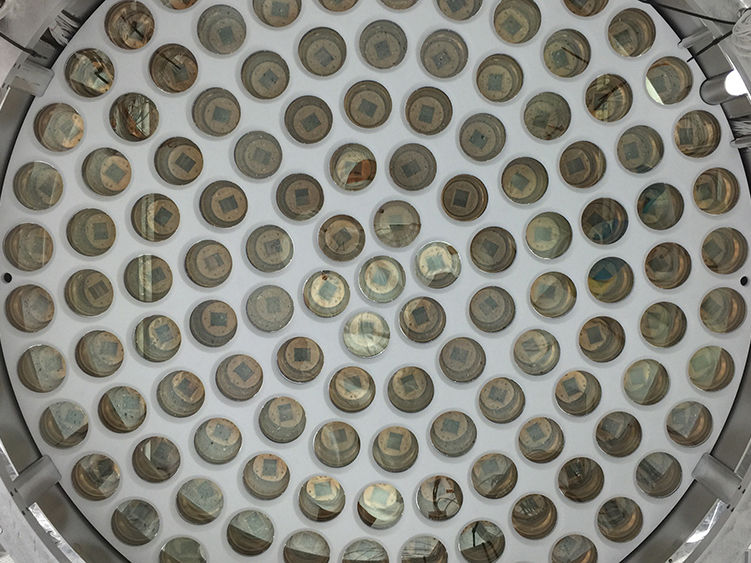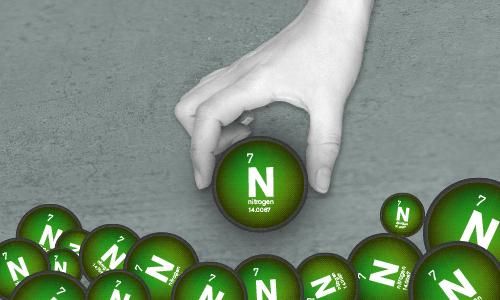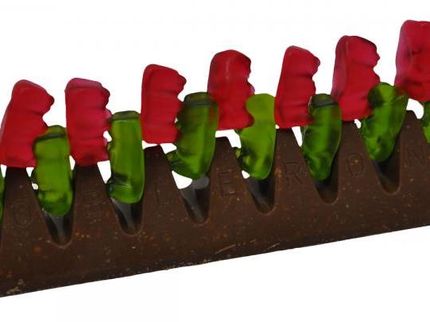Quantum cocktail provides insights on memory control
The speed of writing and reading out magnetic information from storage devices is limited by the time that it takes to manipulate the data carrier. To speed up these processes, researchers have recently started to explore the use of ultrashort laser pulses that can switch magnetic domains in solid-state materials. This route proved to be promising, but the underlying physical mechanisms remain poorly understood. This is largely due the complexity of the magnetic materials involved, in which a large number of magnetic entities interact with one another. Such so-called quantum many-body systems are notoriously difficult to study.

A cocktail of 'shaken quantum magnets'. Experiments in which atoms were immersed in a shaken crystal made of light, provide novel insight that might be helpful to understand the fundamental behaviour of magnetic storage devices.
Michael Messer, ETH Zürich
Frederik Görg and his colleagues in the group of Prof. Tilman Esslinger in the Department of Physics at ETH Zurich (Switzerland) have now used an alternative approach to obtain fresh insight into the physics at play in these systems, as they report in a publication.
Görg and his co-workers simulated magnetic materials using electrically neutral (but magnetic) atoms that they trapped in an artificial crystal made of light. Even if this system is very different from the storage materials they emulate, both are governed by similar basic physical principles. In contrast to a solid-state environment, however, many unwanted effects resulting for example from impurities in the material are absent and all key parameters of the system can be finely tuned. Exploiting this reduction of complexity and degree of control, the team was able to monitor the microscopic processes in their quantum many-body system and to identify ways to enhance and manipulate the magnetic order in their system.
Most importantly, the ETH physicists demonstrated that by controlled shaking of the crystal in which the atoms reside, they could switch between two forms of magnetic order, known as anti-ferromagnetic and ferromagnetic ordering -- an important process for data storage. The fundamental understanding gained from these experiments should therefore help to identify and understand materials that might serve as the basis for the next generation of data-storage media.
Original publication
Frederik Görg, Michael Messer, Kilian Sandholzer, Gregor Jotzu, Rémi Desbuquois & Tilman Esslinger; "Enhancement and sign change of magnetic correlations in a driven quantum many-body system"; Nature; 2018
Original publication
Frederik Görg, Michael Messer, Kilian Sandholzer, Gregor Jotzu, Rémi Desbuquois & Tilman Esslinger; "Enhancement and sign change of magnetic correlations in a driven quantum many-body system"; Nature; 2018
Topics
Organizations
Other news from the department science

Get the chemical industry in your inbox
By submitting this form you agree that LUMITOS AG will send you the newsletter(s) selected above by email. Your data will not be passed on to third parties. Your data will be stored and processed in accordance with our data protection regulations. LUMITOS may contact you by email for the purpose of advertising or market and opinion surveys. You can revoke your consent at any time without giving reasons to LUMITOS AG, Ernst-Augustin-Str. 2, 12489 Berlin, Germany or by e-mail at revoke@lumitos.com with effect for the future. In addition, each email contains a link to unsubscribe from the corresponding newsletter.
Most read news
More news from our other portals
Last viewed contents

Researchers Observe Slowest Atom Decay Ever Measured
Bryostatin

3D-printed lithium-ion batteries




























































